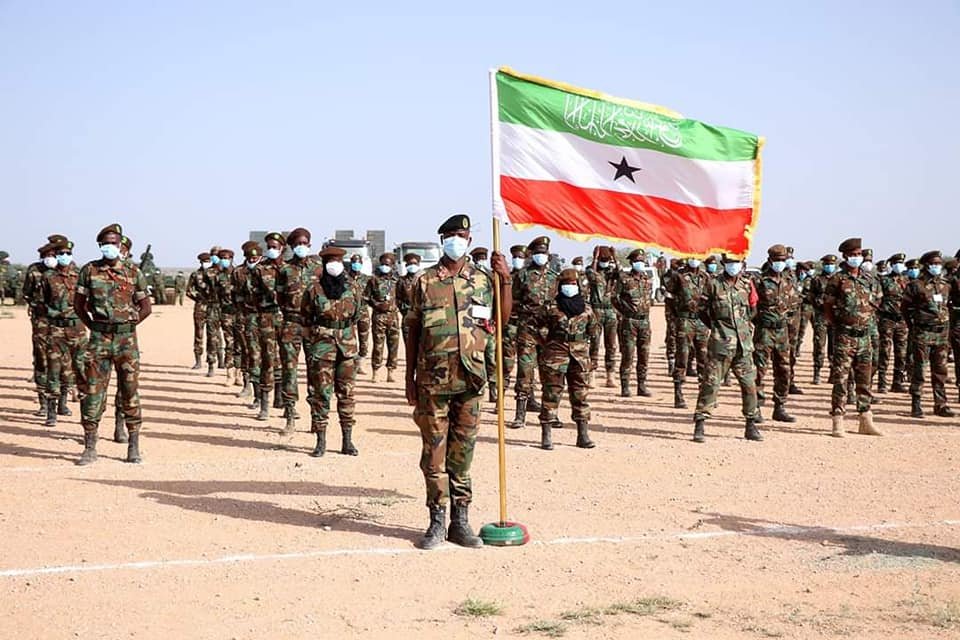Clashes in Somaliland Kill Hundreds, Displace Thousands
The Somaliland National Army pictured in 2021 (Wikimedia).
An explosion of violence in Somaliland’s contested Sool region has seen government forces doing battle with local clans. Over the last month, hundreds have been killed and at least 185,000 refugees have fled to neighboring Ethiopia.
The origins of the conflict lie in the continued uncertainty regarding Somaliland’s borders since its unilateral declaration of independence from Somalia in 1991. While Somaliland has been relatively peaceful in the three decades since its de facto independence, both Puntland, a semi-autonomous region of Somalia, and Somaliland retain their claims to the Sool region, which is located in the southeast of the territory and almost exclusively populated by the Dhulbahante clan.
The escalation began in early February when protestors in the town of Las Anod took to the streets after the assassination of a local politician to demand Somaliland cede the city to Puntland. Somaliland’s army responded harshly, initiating a crackdown that killed at least 20 while injuring dozens more.
The violence prompted elders of the Dhulbahante clan to declare that they sought to create their own semi-autonomous region, not part of Somaliland or Puntland, that would be a part of the Federal Republic of Somalia. After hearing about the announcement, it’s alleged that Somaliland forces began attacking Las Anod, the regional capital of Sool.
Fierce fighting has followed as local Dhulbahante militias battle with Somaliland forces. The militias managed to push the Somaliland army out of Las Anod, capturing several army bases and weapons caches in and around the city. The army has responded with heavy shelling, allegedly striking hospitals in the city (an accusation which the army denies).
Somaliland’s government has accused Puntland of actively supporting the militias, which Puntland denies. Meanwhile, Somaliland forces appear poised to launch a counterattack in an attempt to regain control of the city.
There is no sign of the fighting – which has killed at least 210 civilians and an unknown number of combatants – slowing down. A brief ceasefire in the middle of February fell apart after both sides accused each other of breaking it.
Appeals for a peaceful solution have come in from around the world. Volker Turk, UN rights chief, asked authorities to conduct a “credible and impartial investigation” into the causes of the fighting that would satisfy both sides. The Somali government has also called for peace, declaring that clan leaders should be allowed to determine Las Anod’s future. However, with both the militias and the Somaliland government showing no signs of backing down, the fighting will likely continue.

